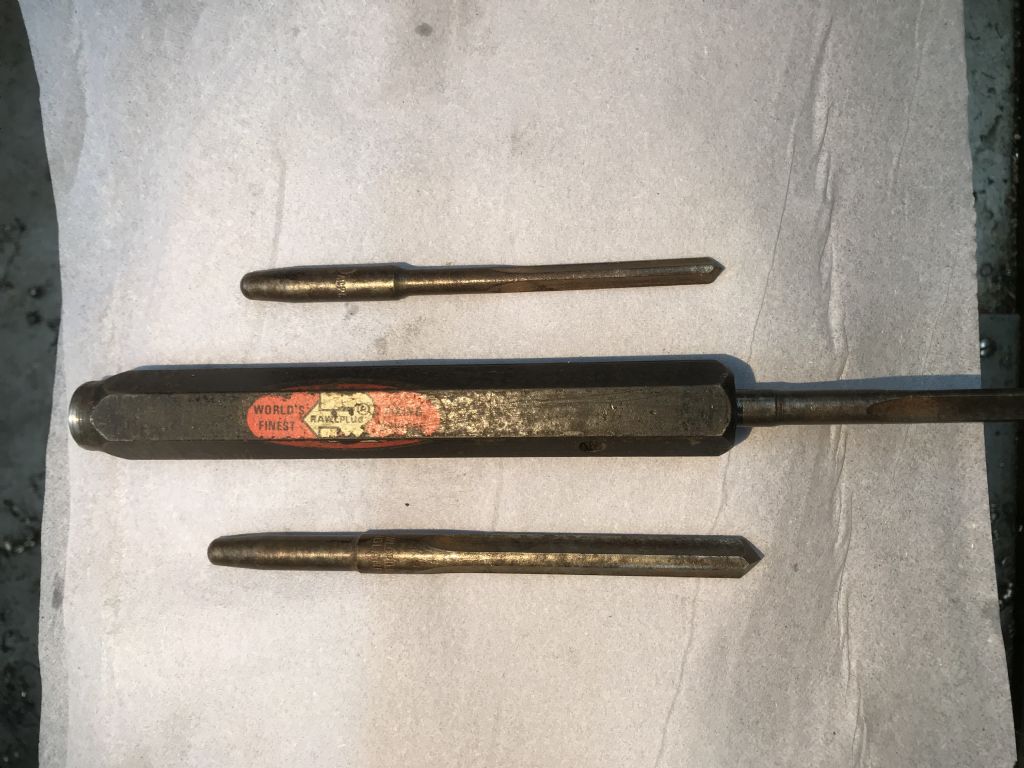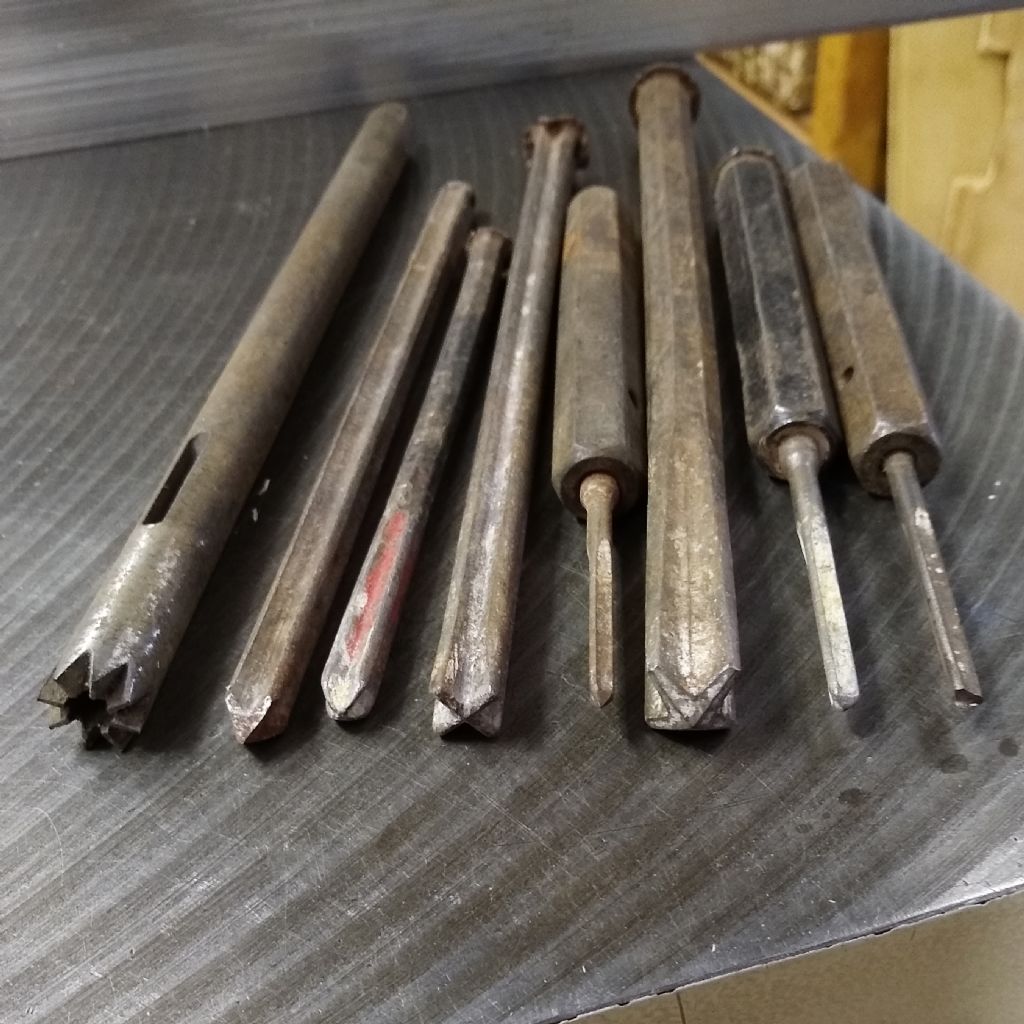There were other makes of similar filler.
My dad was very practical, and highly skilled at DIY work so had a wide range of tools and building sundries at home – including both the old Rawl-drills and fibre-plugs, and modern masonry bits and plastic plugs. When we cleared their home I found a small jar of what I knew was a masonry-anchor material, and it appeared to be a mixture of asbestos fibre and a cement resembling 'Polyfilla'. I mixed it with water and let it set to an inert lump for disposal.
Interestingly, the label read 'Screwfix', making me wonder if that was co-incidence or the company we know now, did indeed make / sell this material under its own name.
'
What did they use before these new-fangled hollow plugs or fillers? Whittled slivers of wood.
'
Mark Easingwood –
I am pretty sure the left-hand tool in your photo is a masonry-drill, as it closely resembles the so-called "self-drilling" anchors that are or were made by Rawl.
Those consist of a female-threaded, hollow sleeve with teeth like that too. They are inserted by screwing them onto a driver to create their own star-drill, and once to depth you withdraw the assembly, insert a truncated conical plug into the anchor's open end, then hammer it back home so the cone expands the inner end against the hole wall. The threads are arranged so that they do not bear the hammering forces. The object to be secured is then held by a standard set-screw or bolt in the anchor's open end.
Looking again at your photo makes me wonder if that is a driver and anchor assembled, because the end part is a distinctly different colour from the rest at a very well defined boundary. The slot would be to allow chips to escape. The doubt comes because the larger sizes of these anchors have part-cut break-slits that help them to expand, but not evident in the picture.
'
My familiarity with that type of 'Rawl-bolt' comes from hanging from them for dear life. Literally! Caving in this country went through a technical upheaval in the 1980s when 'Single Rope Techniques' largely replaced wire-sided ladders for descending and ascending vertical drops. The ropes are tied to anchors installed in the cave wall, and before proper anchors could be developed we used small brackets set-screwed to Rawl inserts. The Rawl company was horrified when they discovered we were gleefully abseiling down blooming great deep holes, from M8-threaded fastenings intended for securing pipes and shelves to buildings! Well, we always used at least two anchors as the main belay…
Alan Vos.






